Reasons to Buy Nikon AF Micro-Nikkor 200mm f4D ED-IF Lens
Here we’ve included a summary of the advantages and disadvantages of the Nikon AF Micro-Nikkor 200mm f4D ED-IF lens in a list form to help you determine whether it offers the features you need.
PROs
| Autofocus |
| Aperture Ring |
| Distance Scale |
| DoF(Depth of Field) Scale |
| Tripod Collar |
| Covers Full-Frame Sensor |
| 9 Diaphragm Blades for Smooth Bokeh |
Report a correction
Buy Nikon Micro-200mm f4D ED-IF from or B&H PHOTO
CONs
| Hood is not supplied |
| Heavy |
| Pricey |
Lens Mount
Nikon Micro-200mm f4D ED-IF is compatible with cameras that have a Nikon F (FX) lens mount. Some of the latest released cameras that are compatible with the Nikon F (FX) lenses are Nikon D6, Nikon D780 and Nikon D3500.
Size, Weight and Filter Thread
Size and weight is a very important decision factor when searching for your next lens. Nikon Micro-200mm f4D ED-IF has a maximum diameter of 76mm and total length of 193mm. It weighs 1190g / 42.0 oz.
Nikon Micro-200mm f4D ED-IF has a filter thread of 62mm. Below are links to the filters that we recommend you to consider for your Nikon Micro-200mm f4D ED-IF:
Optical Image Stabilization
Nikon Micro-200mm f4D ED-IF doesn’t have an optical image stabilization system so the only option to stabilize the image taken with this lens is to mount on a camera body with IBIS (sensor based In-body image stabilization).
Alternatively, you can check the Nikon 200mm f2G ED VR II in Nikon F (FX) mount that have similar focal range but features Optical Image Stabilization.
Lenses Similar to Nikon Micro-200mm f4D ED-IF With Optical Image Stabilization
| Model | Coverage | Weight | Focusing | Street Price | |
|---|---|---|---|---|---|
|
Nikon AF-S Nikkor 200mm f2G ED VR II Compare |
35mm FF | 2930gr | AF | ||
|
Nikon AF-S Nikkor 200mm f2G ED-IF VR Compare |
35mm FF | 2900gr | AF | ||
|
Sigma APO Macro 180mm F2.8 EX DG OS HSM Compare |
35mm FF | 1640gr | AF |
Below are the 3 Macro Prime type Nikon F mount lens alternatives with highest max magnification ratios:
- Venus 25mm F2.8 2.5-5X Ultra Macro: 5x — (Compare)
- Venus 24mm F14 2x Macro Probe: 2x — (Compare)
- Venus 100mm F2.8 2X Ultra Macro : 2x — (Compare)
Optical Formula
Nikon Micro-200mm f4D ED-IF’s optical formula consists of 13 elements in 8 groups . Special elements used in this design is 2 ED glass elements.
Lens Hood
Nikon Micro-200mm f4D ED-IF doesn’t come with a lens hood. You have to order the hood separately and the model number of the hood is HN-30.
Popular Comparisons of Nikon Micro-200mm f4D ED-IF
Top Alternatives of Nikon Micro-200mm f4D ED-IF Lens
| Model | Coverage | Weight | Focusing | Street Price | |
|---|---|---|---|---|---|
|
Sigma APO Macro 180mm F2.8 EX DG OS HSM Compare |
35mm FF | 1,640 g / 3.61 lb | AF | ||
|
Nikon AF-S Micro-Nikkor 105mm f2.8G IF-ED VR Compare |
35mm FF | 720 g / 1.58 lb | AF | ||
|
Tamron SP AF 180mm F3.5 Di LD IF Macro Compare |
35mm FF | 920 g / 2.02 lb | AF | ||
|
Sigma 150mm F2.8 EX DG OS Macro HSM Compare |
35mm FF | 1,180 g / 2.60 lb | AF | ||
|
Nikon AF Nikkor 180mm f2.8D ED-IF Compare |
35mm FF | 760 g / 1.67 lb | AF | ||
|
Venus Laowa 100mm F2.8 2X Ultra Macro APO Compare |
35mm FF | 638 g / 1.40 lb | MF | ||
|
Tokina AT-X Pro 100mm f2.8 Macro Compare |
35mm FF | 540 g / 1.19 lb | AF | ||
|
Nikon AF-S Nikkor 200mm f2G ED VR II Compare |
35mm FF | 2,930 g / 6.45 lb | AF |
Alternatives
There are many macro objectives on the market for Nikon F mount. The list below is incomplete I’m sure. I haven’t used most of these lenses so can’t comment on their quality.
Nikon: 40mm (DX) 60mm, 85mm (DX) and 105mm. For what I do these lenses are too short. I do own the 60 but rarely use it. There are aftermarket collars for the 105mm.
Tamron: 60mm F/2, 90mm F/2.8, 180mm F/3.5 (the 180 has a tripod collar).
Zeiss: 100mm F/2.8 that by all accounts is excellent.
Tokina: 100mm F/2.8.
Sigma: 105mm, 150mm and 180mm (all F/2.8). The 180 has a tripod collar.
Laowa: 60mm F/2.8 that goes to 2:1. (In addition to the wonderfully exotic 24mm F/14 probe lens, a 15mm F/4 that can reach 1:1 with the subject almost touching the front lens and has shifting capability and finally a 25mm F/2.8 for reproduction ratios of 2.5 – 5:1)
Laowa will release a 100mm F/2.8 with a maximum reproduction ratio of 2:1 and Irix a 150mm F/2.8 that goes to 1:1. Both are manual focus only and will have tripod collars.
Что нужно искать в объективах для макросъемки
Макрофотография позволяет создавать самые красивые и захватывающие изображения мира природы с максимальным удобством. Однако резкость и широкая максимальная апертура большинства макрообъективов позволяют использовать их и для портретной съемки, если вы сможете найти достаточно быстро фокусирующийся объектив!
Вот восемь факторов, которые следует учитывать при выборе макрообъектива:
- качество изображения
- увеличение (коэффициент воспроизведения 1:1 или лучше)
- рабочее расстояние 1:1 (т.е. расстояние от передней части объектива до объекта съемки, которое, как ни странно, меньше минимального расстояния фокусировки, измеренного от плоскости матрицы!)
- максимальная диафрагма (для условий низкой освещенности)
- гладкая, круглая боке
- тихий автофокус
- стабилизация изображения (если вы снимаете с рук)
- внутренняя фокусировка
Выбор между характеристиками макрообъектива
К сожалению, некоторые из этих факторов противоречат друг другу. Поэтому вам придется пойти на некоторые компромиссы.
Например, более длинные объективы позволяют увеличить рабочее расстояние до объекта съемки. Это означает, что у вас больше шансов получить гладкое боке и меньше шансов спугнуть пугливых насекомых или заблокировать естественный свет, особенно при использовании бленды или если ваш объектив не имеет внутренней фокусировки.
Однако они, как правило, тяжелее и имеют более узкую максимальную диафрагму. Если вы работаете с рук или при слабом освещении, это может стать проблемой.
Также верно, что более короткий объектив подойдет, если у вас камера с матрицей APS-C. Это объясняется тем, что эффективное фокусное расстояние умножается на кроп-фактор (1,5 в случае камер Nikon линейки DX).
Определение личных предпочтений
Это также зависит от ваших личных предпочтений. Например, автофокус и стабилизация жизненно необходимы, если вы снимаете с рук, но гораздо менее важны, если вы серьезный макрофотограф, использующий штатив и стробы.
В этом случае вас может больше заинтересовать объектив, поддерживающий метод фокус-стекинга Nikons со сдвигом фокуса. Это позволит вам сделать десятки или даже сотни снимков с разными настройками фокуса. Затем их можно объединить, чтобы получить резкость объекта съемки от переднего до заднего плана.
Важно также отметить, что объективы сторонних производителей часто обманывают, предлагая лучшие технические характеристики по более низкой цене, чем объективы Nikon. Но они разочаровывают в том, что имеет значение, а именно качество изображения
Focussing
The autofocus of this lens is painfully slow but it can sometimes be used. For me the best strategy is to work in AF-S mode, get approximate focus, release the shutter and then fully depress the shutter in one go so the image is taken as soon as focus is achieved. Waiting for focus and then pressing the shutter often results in out of focus images because any movement backwards or forwards in the time between focus acquisition and shutter release is enough to move out of the depth of field. The images of the Heliconia Butterfly, Giant Orb spider and Tarantula were taken in this way hand held since there was no way to set up a tripod. The amazing image quality at high ISO of the D850 is a real life saver when flash is not an option.
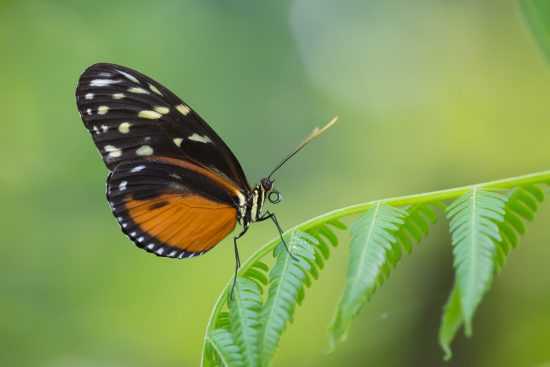
Heliconia Butterfly (Heliconius hecale), Costa Rica. D800E, F/5.6. 1/200s ISO 1600
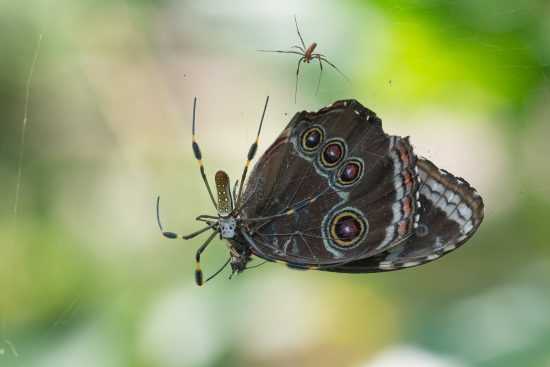
Giant orb spider (Nephila clavipes) with prey, Costa Rica. D800E, F/8, 1/400s ISO 1600.
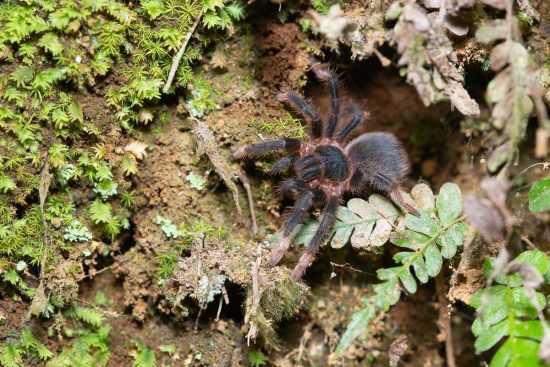
Tarantula (Theraphosidae sp.), Costa Rica. D800E, F/8, 1/60s ISO 400, SB600 flash with soft box.
The lens does have a design flaw that is related to focussing: The plastic selector ring for AF/MF can break. I’ve seen this on three individual lenses. In fairness to Nikon the ring was replaced free of charge on all three lenses, even though they were 5 to 7 years old at the time. This was done for my lens over 15 years ago and it hasn’t happened since, so maybe the construction was improved. While we’re on things that could be better: The metal screw in hood is a pain, it tends to screw on crooked and mine squeaks terribly when I screw it on.
Working distance

European tree frog (Hyla arborea), Netherlands. D2x, F/8 1/30s ISO 100.
For image such as these the working distance must be as big as possible. Tree frogs are shy and the brambles on which the frogs rest form an impenetrable tangle. Placing the tripod too close will shake the branches and disturb the animal (a long working distance also slightly reduces the number of scratches on my arms after photographing these animals). Even with the working distance that the 200mm affords, moving very slowly is essential to avoid disturbing the little frog.
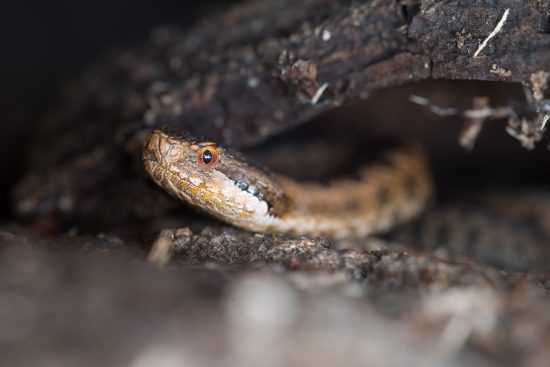
Aspic viper (Vipera aspis) in wood stack, France. D800E, F/8, 1.6s ISO 400.
Another argument for sufficient working distance.
Nikon 200mm f/4D ED-IF AF Micro Nikkor User Reviews
9.6/10
average of 5 review(s)
Build Quality
10.0/10
Image Quality
10.0/10
-
9 out of 10 points
and recommendedImage quality is superb, also on digital camera’s from today
Plastic AF ring breaks. —
AF not really useable (slow) —1993 ; Nikon redefines macro lenses
2021 ; Still the best macro lens ever made
Just don’t use the AF (which you don’t need anyway for macro work)
_
PS if you think I’ll just buy the MF version; DON’T
the image quality of the MF version doesn’t come even close to the AF versionreviewed August 20th, 2021
(purchased for $1,100) -
10 out of 10 points
and recommendedSHARP. VERY SHARP
nice and small to pack
uses small filters, easy to use with a polarizer
easy to reach, tactile aperture ring
works well with extension tubes
Excellent build quality. Bomb proof
AF pretty useless
Use MF and your body to focus
MF ring badly placed away from the cameraI have used this lens for 10 years and more than 30,000 photos.
The quality has never let me down, from the D2x over a d800 to a d4 today.
It was stolen badly dropped and still works fine apart from the AF which I don’t miss much
The focus ring could be more towards the camera but that is really all there is to say.
it is ideal for hand held insect photography. Just the thing to get close enough to butterflies, dragons and much more.
But I have also shot products with it , from synchro rings over bearings and wear in ball races.
I have used it as a normal walkabout tele and even shot hummingbirds.
Yes, I still love it although I bought a sigma 180mm while it was missing. They both have their strong points. Last but not least, this one fits in any bag or jacket pocket.
I bought it in Italy .reviewed March 11th, 2016
(purchased for $1,600) -
10 out of 10 points
and recommendedsharpness, tripod collar, enormous focusing ring
week plastic ring to set Manual or AutofocusMost of the time I use the Nikon 300mm f/4 AFS with the Nikon extension tubes for macro. Working distance is great and depth of field a bit more forgiving than the 200mm Micro.
However for smaller critters I started using this lens again. In combination with the D300 and D200. I am thrilled with the results. I always use a tripod and Mirror Lock Up. Sharpness is terrific. I don’t miss VR and the tripod collar is sturdy enough.
See for yourself:
http://www.pbase.com/toondesmit/image/99485351
http://www.pbase.com/toondesmit/image/101747588
http://www.pbase.com/toondesmit/image/100202324
Sometimes I have a hard time choosing between the 300mm with the PN-11 and the 200mm Micro!reviewed August 24th, 2008
-
10 out of 10 points
and recommendedSharpness; long working distance
AF performanceThe sharpness of this lens is well-known, and I find it to be one of my sharpest lenses (though not as sharp as the amazing 200 f2 VR). However, I find its longish working distance (especially when paired with a camera with a DX sensor) when working with many macro subjects to be of even higher importance.
I agree with almost everyone’s view that the AF performance on this lens is poor. However, this is a MICRO/MACRO lens and, as such, I believe that AF performance is pretty much irrelevant to its intended use. If anyone is looking for a good macro lens with a good autofocus system, they should probably look at the Nikkor 105 f2.8 VR.reviewed October 30th, 2007
(purchased for $1,800) -
9 out of 10 points
and recommendedVery sharp!
Slow autofocus, heavyI tried this lens out one day in a camera store because I was curious about it. The store let me use their D50 and I used my memory card to record the images and review later.
This lens produces amazing image quality, but is terrible when using auto focus. I would not recommend using this lens if you plan to chase bugs, unless they are sitting and not moving unless you manually focus. It takes a good 10 seconds to acquire focus after making loud noises while the gears inside shift around. If you want to use this lens, do not waste your time with the auto focus.
If you have some jewelry, plants, or non-moving items that will not scurry away from the loud noises it produces, this lens will produce images beyond your expectations.reviewed November 15th, 2006
Using a tripod
Hand held shots are an exception to the rule. For 99% of shots the lens is mounted on a tripod. The tripod collar is excellent. I’ve mounted a long arca swiss type plate for better balance and sometimes use it as a primitive focussing rail. The two holes in the mounting plate are a nice touch, I use both to keep the plate securely mounted without any risk of rotation.
A sturdy tripod is essential as is a tripod head that does not sag even a little bit after locking. I use a Gitzo 13448 tripod with a RRS BH55 ball head and a Wimberley sidekick. The tripod can be placed completely flat, the BH55 is extremely stable and the sidekick really helps with quick framing.
For low level images the sidekick can also be used by moving the ball head to the ‘normal’ position which leaves the sidekick horizontal with the lens and camera hanging from it. Of course this is somewhat awkward. You have to take great care when adjusting framing and really tighten the lock on the ball head (and yes both camera and lens have seen their fair share of mud when I forgot to do this properly.
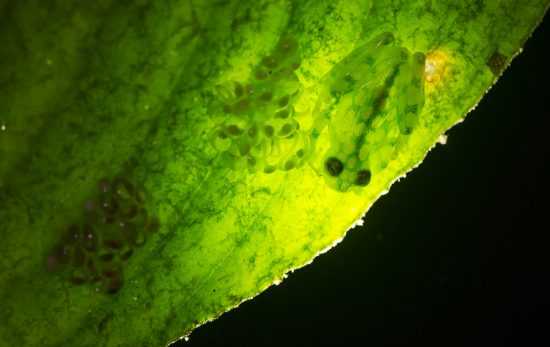
Glass frog (Hyalinobatrachium fleischmanni?), Costa Rica. D800E, F/5.6, 1/200s, ISO 500, led lights.
The glass frog was almost directly overhead and I was standing on slippery rocks in a stream (the eggs are, for obvious reasons, always over water). Tilting the sidekick backward made it possible to achieve this perspective. The frog was lit with two led lights, one below and one above the leaf to highlight its transparency and the pattern on its back that mimics an egg clump in order to attract predators to the frog rather than the real eggs.
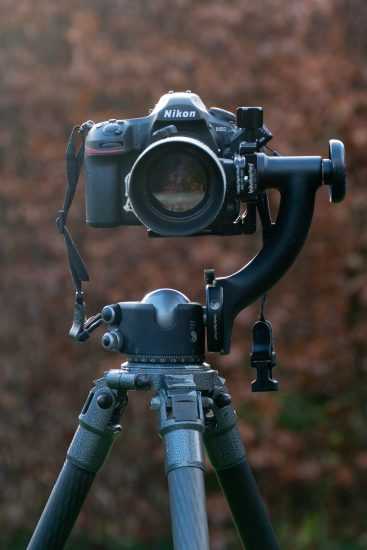
D850 with 200mm, RRS BH55 ball head and Wimberley sidekick
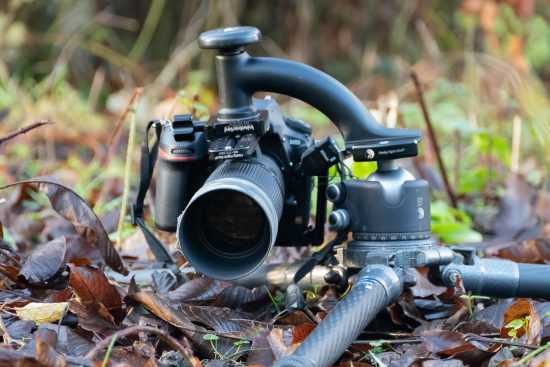
D850 with 200mm, RRS BH55 ball head and Wimberley sidekick for low level photography
Наши любимые макрообъективы
Не удивительно, что нашим любимым объективом является Nikons AF Micro-Nikkor 200mm f/4D IF-ED, несмотря на его медленный автофокус и отсутствие стабилизации. Однако Tamron SP 90mm f/2.8 Di MACRO 1:1 VC USD (модель F017) — достойный соперник.
Другие макрообъективы, которые стоит рассмотреть
В наш список включены только макрообъективы 90 мм 1:1, доступные в настоящее время для полнокадровых (FX) и кроп-сенсоров (DX) камер Nikon — либо DSLR, либо беззеркальных. Это означает, что мы упустили несколько отличных объективов, которые могут подойти именно вам.
Снято с производства:
Nikon 70-180mm f/4.5-5.6 AF Micro (б/у)
1:1:
- Tamron SP 70-200mm F/2.8 G2 (модель A025 (восстановленный)
- Sigma 18-300mm f/3.5-6.3 Macro
- Объектив Tamron Auto Focus 70-300mm f/4.0-5.6 Di LD Macro Зум-объектив
Не менее 90 мм:
- Zeiss Milvus 50mm f/2 Macro, Meike 85mm f/2.8 Macro Lens
- Lensbaby Velvet 85
Только серия Z:
Z 105mm f/2.8 VR Macro
Только для DX:
- Nikon AF-S DX 40mm f/2.8G
- Nikon 85mm f/3.5 VR DX
Заключение
Как говорится в старой поговорке, никого никогда не увольняли за покупку Nikon. Подобно тому, как в 1970-х годах компания IBM была символом качества и надежности, объективы Nikonобъективы известны для макросъемки. Объективы AF Micro-Nikkor 200mm f/4D IF-ED и Nikon AF-S VR Micro-Nikkor 105mm f/2.8G IF-ED представляют собой надежные варианты для тех, у кого камеры Nikon.
Как бы то ни было, обычно за это приходится платить. И теперь есть варианты от сторонних производителей, такие как Tamron SP 90mm f/2.8 Di MACRO 1:1 VC USD (Model F017) и Venus Laowa 100mm f/2.8 2X Ultra Macro APO, которые предлагают исключительную резкость, кремовые эффекты боке и даже 2-кратное увеличение в последнем случае.
Помните, что все макрофотографы уникальны и имеют свои собственные методы работы. Если вы любите снимать пугливых насекомых, вам лучше выбрать макрообъектив с большим фокусным расстоянием. Однако если вы серьезно занимаетесь макросъемкой и всегда используете штатив и стробоскоп, то резкость для вас гораздо важнеестабилизации.
Выбор за вами лучший макрообъектив для Nikon!





























